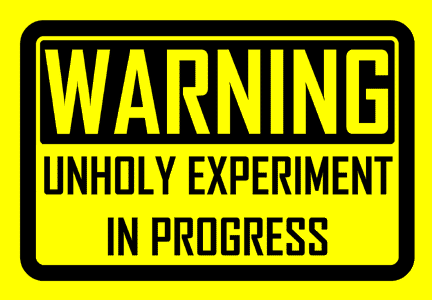FOR READERS
Today’s reader topic comes from QSFer Denise Dechene:
This came up in a group:
A lot of books have warnings or listings of possible triggers.
Do you think that books today have too many of these and do you think too many warnings affect sales?
Writers: This is a reader chat – you are welcome to join it, but please do not reference your own works directly. Thanks!




It depends on whether a tag is the same as a warning. Personally, the only things I need to be warned against are a cliff-hanger ending, and BDSM content, both of which are not on my buy-list. Other than that, if the blurb grabs me and the cover intrigues, then I’ll buy it.
Warnings and lists of possible triggers leave me in two minds. On the one hand, I can understand that readers have their preferences – see mine above :) – and some issues can be triggery, but the print books on the shelves in the stores and the libraries don’t carry them, so why do the online suppliers?
For instance, if a reader is triggered by any of the battle, murder, sudden death, treachery, betrayal, cheating partners, and so on, in a hard-hitting mystery with or without romance, then battle, murder, sudden death, treachery, betrayal, cheating partners, and so on, are part of the genre, so perhaps the genre is the one the vulnerable reader needs to avoid, not the individual book?
Trigger warnings are very important for fan fiction. We’re a diverse, passionate group of readers with a variety of triggers. Warnings warn us away from those triggers and towards what interests us. For published stories, good cover art does the same thing through subtle visual cues.
I think a lot of people confuse “trigger warnings” and “tags”. Trigger warnings are things that can potentially trigger someone who has survived or overcome a terrible circumstance. These are things like rape, incest, sexual assault, domestic abuse, and extreme depictions of violence. And I think it’s VERY important that we include warnings for potentially triggering issues. Imagine how traumatizing it would be to be a sexual assault survivor, and then to sit down with a book, turn the page, and be faced head-on with a description of your own past trauma?! It’s easy enough to warn for these things, and the warnings can help people avoid issues that can harm them emotionally and mentally.
Another note: We have ratings in front of our movies… the MPAA will tell you that a movie is rated R and why, exactly, it earns that rating. No one says, “Wait, I’ve been spoiled by knowing this movie is Rated R for “Pervasive strong violence, torture, graphic language, and rape scenes” (I’ve taken this directly from an actual MPAA rating)”, so why on earth would anyone not want the same thing in front of a book?!